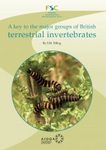Flora / Fauna Identification Key
By: Yves Séméria(Author), Jean-Loup d'Hondt(Foreword By)
293 pages, 7 plates with b/w photos; 149 b/w line drawings
![Faune de France, Volume 87: Tardigrades Continentaux: Oligohydrobiontes et Hétérohydrobiontes [Continental Tardigrades] Faune de France, Volume 87: Tardigrades Continentaux: Oligohydrobiontes et Hétérohydrobiontes [Continental Tardigrades]]()
Click to have a closer look
About this book
Contents
Customer reviews
Related titles
About this book
Language: English with bilingual keys in English and French
Tardigrades (etymologically “slowly moving”) are animalcules whose size barely falls outside the 0.1-1 mm interval. There are 600-700 known species on the globe, and undoubtedly many more to be discovered, they colonize practically all possible biotopes, both marine and continental, land areas, rivers, and lakes. They are very easy to collect, even in an urban environment, their ability to revive fascinates many biologists.
This work is restricted to continental tardigrades and lists around a hundred species found in France. The first part covers morphology, anatomy, reproduction and development, as well as biology, with excellent electron microscopy photographs in a plate section at the back of the book. The second part relates exclusively to systematics with keys allowing the identification of all known French species, each of them being the subject of one or more line drawings and comments on its distribution, ecology, and biology. All keys are translated into English. An important and annotated bibliography completes the work.
Summary in French:
Les tardigrades (étymologiquement « qui se déplacent avec lenteur ») sont des animalcules dont la taille sort à peine de l’intervalle 0,1-1 mm. comptant 600-700 espèces connues sur le globe, et sans doute bien d’autres découvrir, ils colonisent pratiquement tous biotopes possibles, aussi marins que continentaux terres émergées, rivières lacs. très faciles récolter, même en milieu urbain, leur capacité reviviscence a passionné nombreux biologistes.
Cet ouvrage est restreint aux Tardigrades continentaux, il en dénombre une centaine d’espèces que l’on rencontre en France. La première partie traite de la morphologie, de l’anatomie, de la reproduction et du développement, ainsi que de la biologie, avec d’excellentes photographies hors-texte en microscopie électronique. La seconde partie se rapporte exclusivement à la systématique avec des clés permettant l’identification de toutes les espèces françaises connues, chacune d’elles faisant l’objet d’un ou plusieurs dessins au trait et de commentaires sur sa répartition, son écologie et sa biologie. Toutes les clés sont traduites en langue anglaise. Une bibliographie importante et commentée termine l’ouvrage.
Contents
Préface
Introduction
Généralités
Systématique: formes adultes, œufs, clés en français et clés en anglais
Bibliographie
Index des taxa
Table des matières
Customer Reviews
Flora / Fauna Identification Key
By: Yves Séméria(Author), Jean-Loup d'Hondt(Foreword By)
293 pages, 7 plates with b/w photos; 149 b/w line drawings





![Faune de France, Volume 87: Tardigrades Continentaux: Oligohydrobiontes et Hétérohydrobiontes [Continental Tardigrades] Faune de France, Volume 87: Tardigrades Continentaux: Oligohydrobiontes et Hétérohydrobiontes [Continental Tardigrades]](http://mediacdn.nhbs.com/jackets/jackets_resizer_xlarge/15/153722.jpg?height=620)
![Faune de France, Volume 87: Tardigrades Continentaux: Oligohydrobiontes et Hétérohydrobiontes [Continental Tardigrades]](http://mediacdn.nhbs.com/jackets/jackets_resizer/15/153722.jpg)







![Faune de France, Volume 94: Coléoptères Carabiques, Volume 1: Complément et Mise à Jour [Coleoptera Carabidae, Volume 1: Complement and Update]](http://mediacdn.nhbs.com/jackets/jackets_resizer_medium/19/198882.jpg?height=150&width=100)

![Faune de France, Volume 98: Vespidae Solitaire de France Métropolitaine (Hymenoptera: Eumeninae, Masarinae) [Solitary Wasps of Metropolitan France]](http://mediacdn.nhbs.com/jackets/jackets_resizer_medium/23/234140.jpg?height=150&width=99)
![Faune de France, Volume 100: Les Delphacidae de France et des Pays Limitrophes (Hemiptera, Fulgomorpha) [The Delphacidae of France and Neighbouring Countries] (2-Volume Set)](http://mediacdn.nhbs.com/jackets/jackets_resizer_medium/24/246912.jpg?height=150&width=200)
![Faune de France, Volume 77: Hémiptères Saldidae et Leptopodidae d'Europe Occidentale et du Maghreb [Hemiptera Saldidae and Leptopodidae from Western Europe and the Maghreb]](http://mediacdn.nhbs.com/jackets/jackets_resizer_medium/34/34077.jpg?height=150&width=98)
![Faune de France, Volume 99: Les Coléoptères de la Province de Kerguelen [The Coleoptera of the Kerguelen Islands]](http://mediacdn.nhbs.com/jackets/jackets_resizer_medium/24/240187.jpg?height=150&width=100)




















